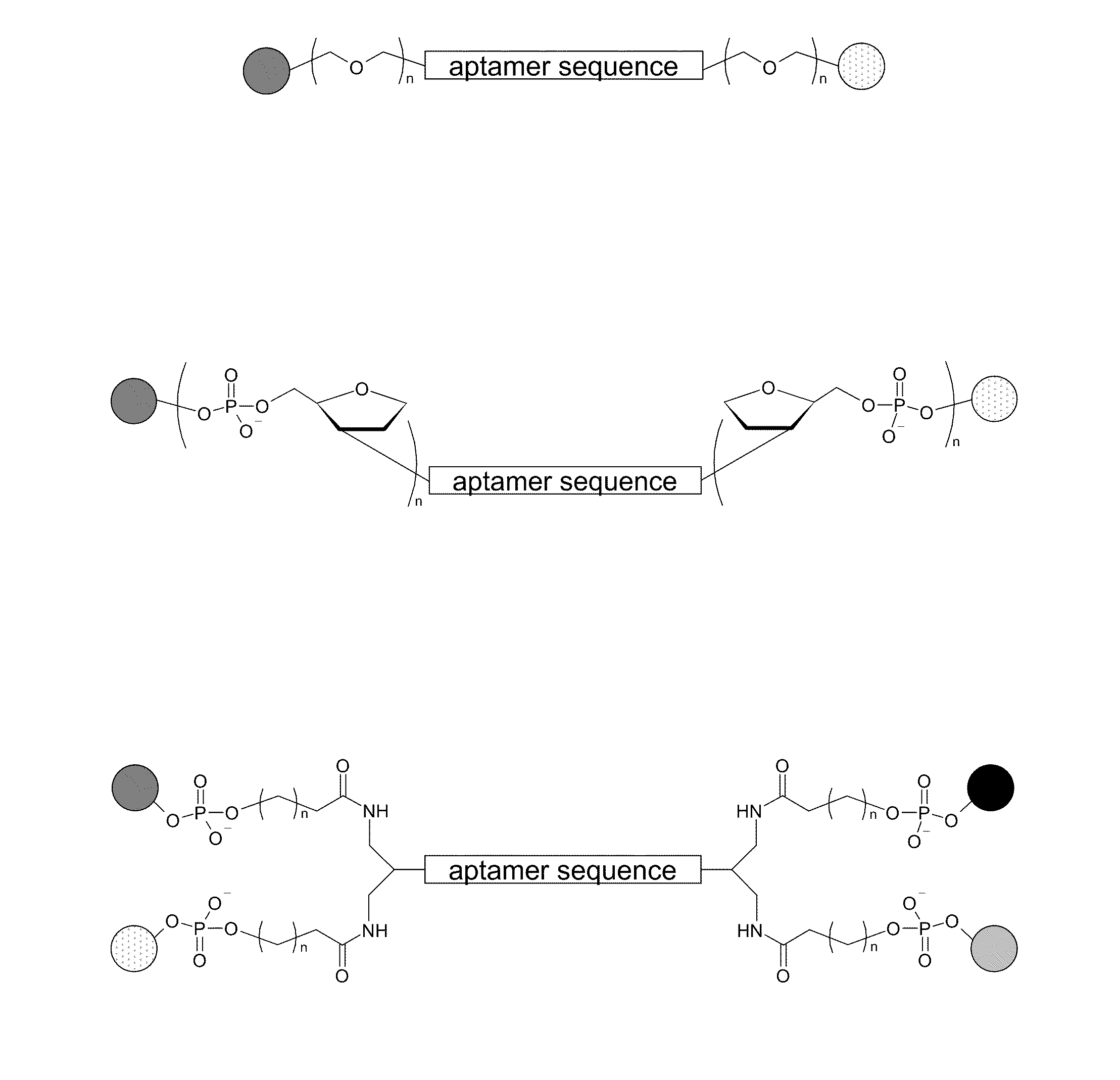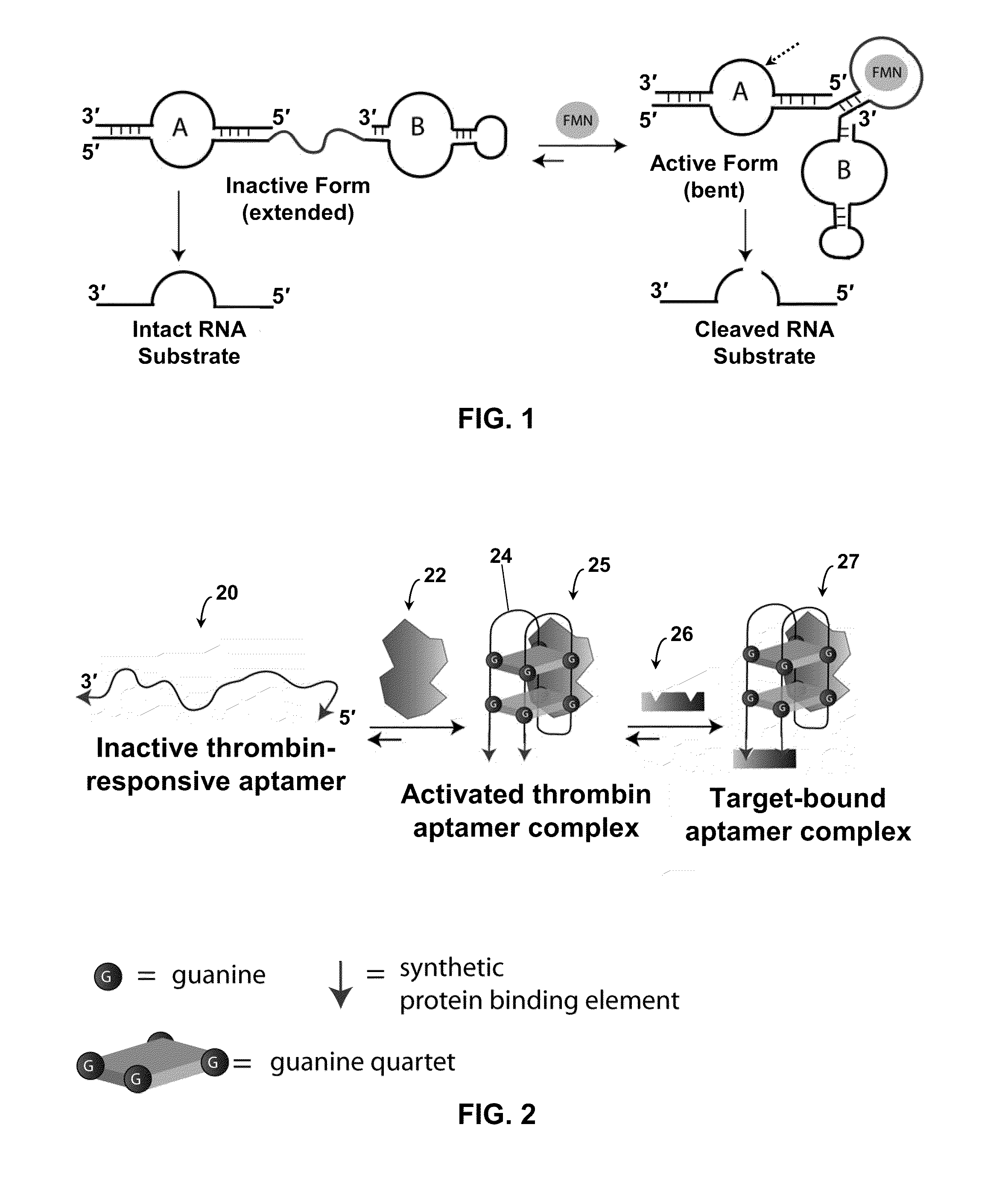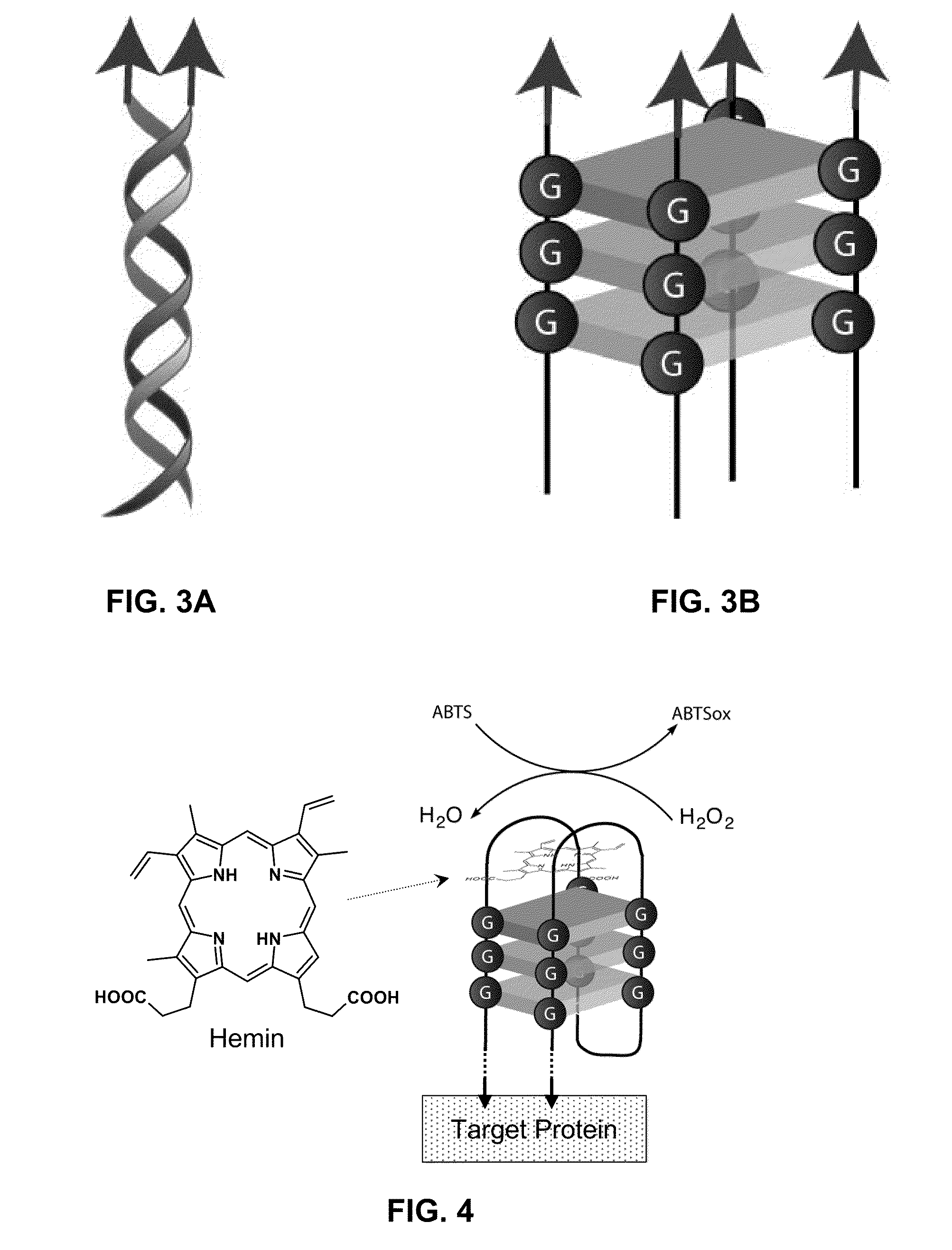Stimulus-Responsive Apta Chelamers
- Summary
- Abstract
- Description
- Claims
- Application Information
AI Technical Summary
Benefits of technology
Problems solved by technology
Method used
Image
Examples
example 1
Design of Apta-Chelamers and of Trypsin-Binding Arms
Apta-chelamer 1 (FIG. 12, Formula 3) comprises a core aptamer domain derived from the thrombin-binding aptamer sequence (SEQ ID NO:6) and, as such, is capable of forming a chair-type intramolecular quadruplex in the presence of thrombin (see Q. Wu, M. Tsiang, J. E. Sadler, J. Biol. Chem. 1992, 267, 24408-24412; and E. Baldrich, C. K. O'Sullivan. Anal. Biochem. 2005, 341, 194-197, each of which is incorporated by reference herein in its entirety) or templating potassium cations (see S, Nagatoishi, Y. Tanaka, K. Tsumoto. Biochem. Bioph. Res. Corn. 2007, 352, 812-817, incorporated by reference herein in its entirety). In this AC, one deoxythymidine (dT) is added to the 3′ end of SEQ ID NO:6, and two are added to the 5′ end (FIG. 12, Formula 3), yielding SEQ ID NO:1. The terminal 5′-dT is functionalized with fluorescein. The fluorescein fluorophore serves as a spectroscopic marker to study trypsin-binding through fluorescence anisotrop...
example 2
Apta-Chelamer Preparation
Apta-chelamer 1 was prepared by a simple two-step procedure (FIG. 7). Briefly, the core aptamer sequence (SEQ ID NO:1) bearing a C10-spacer tethered to an N-hydroxysuccinimidyl ester on the 5′-terminus and a C6-spacer linked to a phthalimide-protected amine on the 3′-terminus (which was attached to a controlled pore glass bead) (8; alternatively “ODN 8”) was reacted with 4-aminomethyl benzamidine under basic conditions. The crude 5′-reacted product was cleaved from the bead, and globally deprotected using aqueous ammonium hydroxide. This deprotection step also served to cleave the phthalimide protecting group on the 3′-terminus, thus exposing a nascent primary amine (10; alternatively “ODN 10”). The 3′-terminus was then reacted with 3-iodophenylisothiocyanate to yield AC 1 (1; Formula 3). In addition to synthesizing AC 1, the present inventor also prepared a series of control ODNs (2-4) that lack one or both of the synthetic protein-binding arms. Specificall...
example 3
Synthesis of AC 1: 5′-benzamidine Arm
As represented by FIG. 7, a solution of 5 mg of 4-aminomethyl benzamidine, 1 mL anhydrous DMSO, and 50 μL anhydrous DIPEA, was introduced by syringe to a cartridge containing ODN 8 (1.0 μmol scale) tethered to a controlled pore glass (CPG) support. Note: ODN 8 contains a 5′ N-hydroxysuccinimide ester (5′-Carboxy-Modifier C10) and a 3′ phthalimidyl-amino-modifier (3′-PT Amino-Mod C6). The solution containing 4-aminomethyl benzamidine was pushed through the cartridge ten times and then the CPG-linked DNA / 4-aminomethyl benzamidine mixture was agitated for 1 hr. This process was repeated three times. After which, the CPG-linked DNA / 4-aminomethyl benzamidine mixture was agitated overnight. After removal of the solution containing 4-aminomethyl benzamidine, the cartridge was washed with 1 mL aliquots of HPLC grade acetonitrile and dried by introducing argon flow through the cartridge for 1 hr. The 5′-modified crude oligonucleotide was cleaved and globa...
PUM
| Property | Measurement | Unit |
|---|---|---|
| Fraction | aaaaa | aaaaa |
| Fraction | aaaaa | aaaaa |
| Fraction | aaaaa | aaaaa |
Abstract
Description
Claims
Application Information
 Login to View More
Login to View More - R&D
- Intellectual Property
- Life Sciences
- Materials
- Tech Scout
- Unparalleled Data Quality
- Higher Quality Content
- 60% Fewer Hallucinations
Browse by: Latest US Patents, China's latest patents, Technical Efficacy Thesaurus, Application Domain, Technology Topic, Popular Technical Reports.
© 2025 PatSnap. All rights reserved.Legal|Privacy policy|Modern Slavery Act Transparency Statement|Sitemap|About US| Contact US: help@patsnap.com



